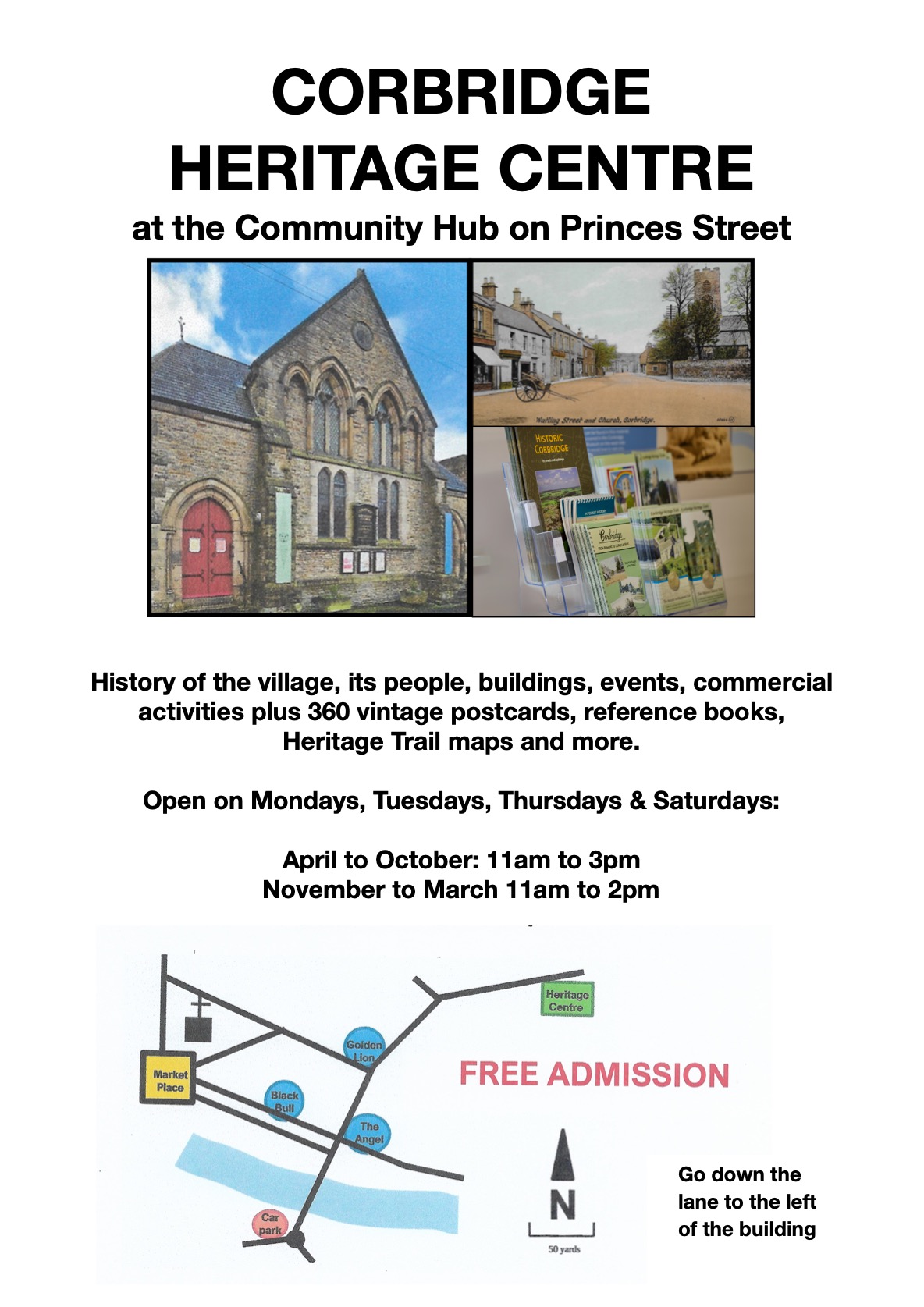Roman settlement of Corstopitum
The Roman settlement of Corstopitum, which dates from AD 79, was located half a mile west of the present settlement of Corbridge. The site was chosen where the north-south Dere Street crossed the river Tyne before meeting the east-west Stanegate that linked military forts along Hadrian’s Wall. The mainly civilian settlement lasted until the Romans left Britain about AD 400. The large excavated site, with its fine museum, is now looked after by English Heritage.
The Saxons
The Saxons built their settlement of Corbridge above the level of river flooding and where there was a water supply (St Andrew’s Well) and where the Tyne, now without a bridge, was fordable. St Andrew’s Church was probably founded in 674 and its Saxon tower still remains.
Originally the main door was at the western end, facing Corstopitum, and the nave was entered under a Roman arch taken in its entirety from the Roman site.
13th Century
By the beginning of the 13th century, Corbridge had entered its `Golden Age’. It began with a visit by King John who, in 1201, granted a charter allowing a weekly market. Already by that time, there was the annual Stagshaw Fair where, twice annually, over 100 000 cattle sheep and horses from all over Britain changed hands. Trade brought wealth and a new bridge over the Tyne was built, St Andrew’s church was extended on five occasions and three sister churches were built. By 1295, when two Corbridgeans were chosen to attend Edward I’s parliament, Corbridge was the second largest and wealthiest settlement in Northumberland.
All changed in 1296 when a band of Scottish Earls destroyed the bridge, the three churches and left St Andrew’s in ruins. Further raids by the Scots, including those by William Wallace in 1297 and Robert the Bruce in 1312, followed by the Black Death in 1349, left the village in extreme poverty which lasted several centuries. Evidence of these impoverished and unruly times can be seen by the King’s Oven, a communal food kitchen located by a plaque in the wall of the church, and the building of the Vicar’s Pele – both in about 1310.
Signs of a recovery began with the building of the present road bridge in 1674 (it was to be the only bridge in the Tyne/ Valley to survive the 1771 flood) and, in the early 18th century, the still existing stone built houses in streets leading from the Market Place. By the 19th century many cottage industries had been set up. These included weaving, with over 30 spinning wheels in the village, and shoe and clog makers – the latter for lead- and coal-miners as well as fishermen. Village growth continued with the opening in 1835 of the Hexham to Newcastle railway, one of the first in the world to carry passengers.
A post card of Middle Street in 1900 shows shop frontages and a skyline identical to that of today. It has been this ability to keep its `old fashioned’ appearance, avoiding modern redevelopment and national chain stores, that makes present day Corbridge so distinctive and popular. This has also been achieved by such community organisations as the former Village Trust, the Heritage Trust (that has helped link places of historic interest in and around the village) and Corbridge in Bloom.
More detailed information available from Forum Books in the Market Place and the Tourist Information Centre in Hill Street includes:
- Historic Corbridge.. David Waugh and The Corbridge Village Trust
- A Pocket History of Corbidge. David Waugh
- St Andrew’s Church. Its History and Architecture. David Waugh
- Three Corbridge Heritage Trails: Historic Corbridge / Historic Fortifications / Historic Dilston.
Plus click / tap here for the ‘Historic Corbridge’ website.
While the new Corbridge Heritage Centre in Princes Street is a treasure trove of information. See poster below:



